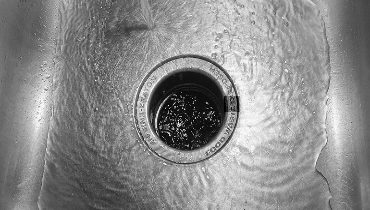
Is your garburator gross? Despite being a device that whisks away food waste, it tends to get pretty dirty. Food particles left behind by this helpful household appliance make it a prime place for mold and bacteria growth. When smells start emanating from this appliance, it’s time for a thorough cleaning. But how can you do it safely and effectively, without destroying your garburator?
How to Clean Your Garburator
We recommend cleaning your garburator at least once a week to keep it both smelling and running properly. Here are some tips that can help you effectively clean your garbage disposal.
Learn where smells lurk
It helps to familiarize yourself with the way a garburator is constructed. Smells can come from the plug/stopper, inside the pipes, within the garburator itself, or around or above the blades.
Try these garburator cleaning tricks
There’s more than one way to clean out a smelly garburator. Tackle the situation with these kitchen cleaning tips:
- Daily cleaning The most common reason for a smelly garburator is food particles left behind due to insufficient water use following operation. For simple daily cleaning, after operating your garburator, plug your sink drain, fill the basin halfway with water, a squirt of dish soap, and a cup of vinegar. Unplug and run the garburator as this mixture flows down, leaving the garburator on for five seconds after the grinding noises even out.
- Weekly garburator deodorizer Bring a pot of water to boil. While the water is heating up, pour half a cup of baking soda into your garburator. Follow the water with a cup of distilled white vinegar. Let the mixture fizz. (If you have a double sink, plug the opposite side.) Very carefully, pour the boiling water down the drain to rinse away debris the fizzy mixture has loosened. Now fill the drain with two cups of ice and add a cup of coarse rock/sea salt if you have it. Run the cold water, and turn on the garburator. Repeat weekly, or daily if odors persist, until unwanted smells are eliminated.
Clean the garburator by hand
If smells persist despite the cleaning methods above, you may have overlooked cleaning a component of your system.
- Baffle/stopper/plug The baffle sits in the collar of the garburator. To clean it, pull it out, rinse it off, and wipe it clean of food waste residue with an old sponge or toothbrush.
- Flaps Scrub down the top and underside of garburator flaps with a baking soda paste solution on an old toothbrush.
- Garburator chamber and blades Refer to ‘garburator deodorizer’ from the above section. Vinegar kills salmonella and E. coli, and is far safer than a chemical cleaner if it comes flying out of your sink. Gritty baking soda, made fizzy with distilled white vinegar, helps loosen grime. The ice cube and rock salt combination likewise removes stuck-on debris.
- Clean plumbing drain lines Pour very hot water down your drains at least once a week to prevent the buildup of smelly, pipe-clogging debris. Adding environmentally friendly drain cleaners monthly, such as BioChoiceES or Earthworm Family Safe Drain Cleaner, can also prevent odors and clogs.
Call Mr. Rooter Plumbing for Help Cleaning Your Garburator
Have you tried to clean or repair your garburator to no avail? Mr. Rooter Plumbing can help you keep your garburator clean and functional. Contact us today to see how we can help with garburator repair, garburator installation, or cleaning your garburator!

